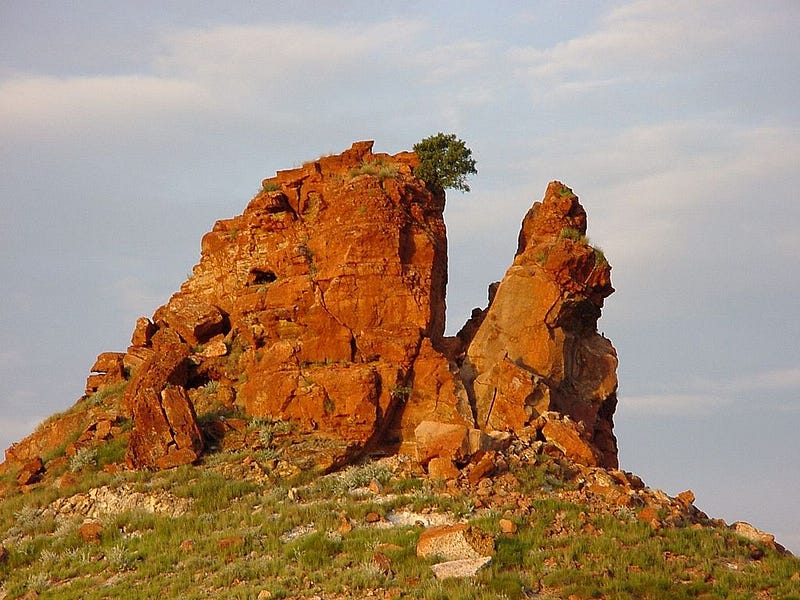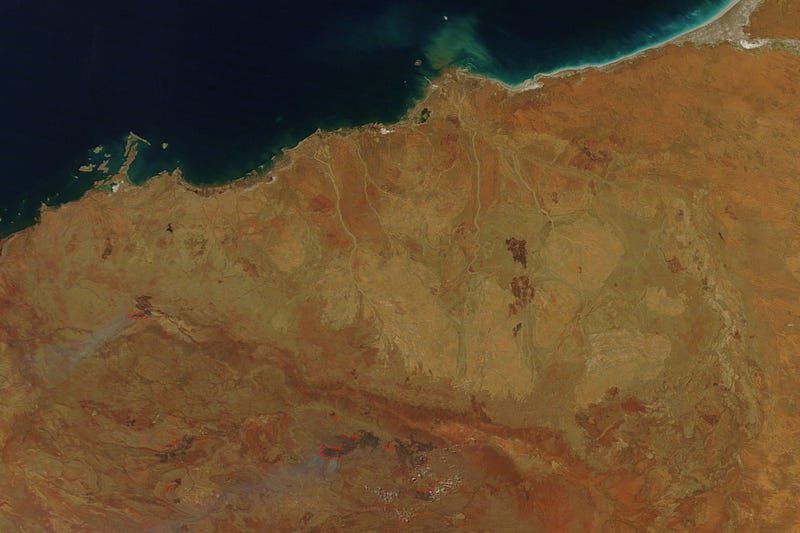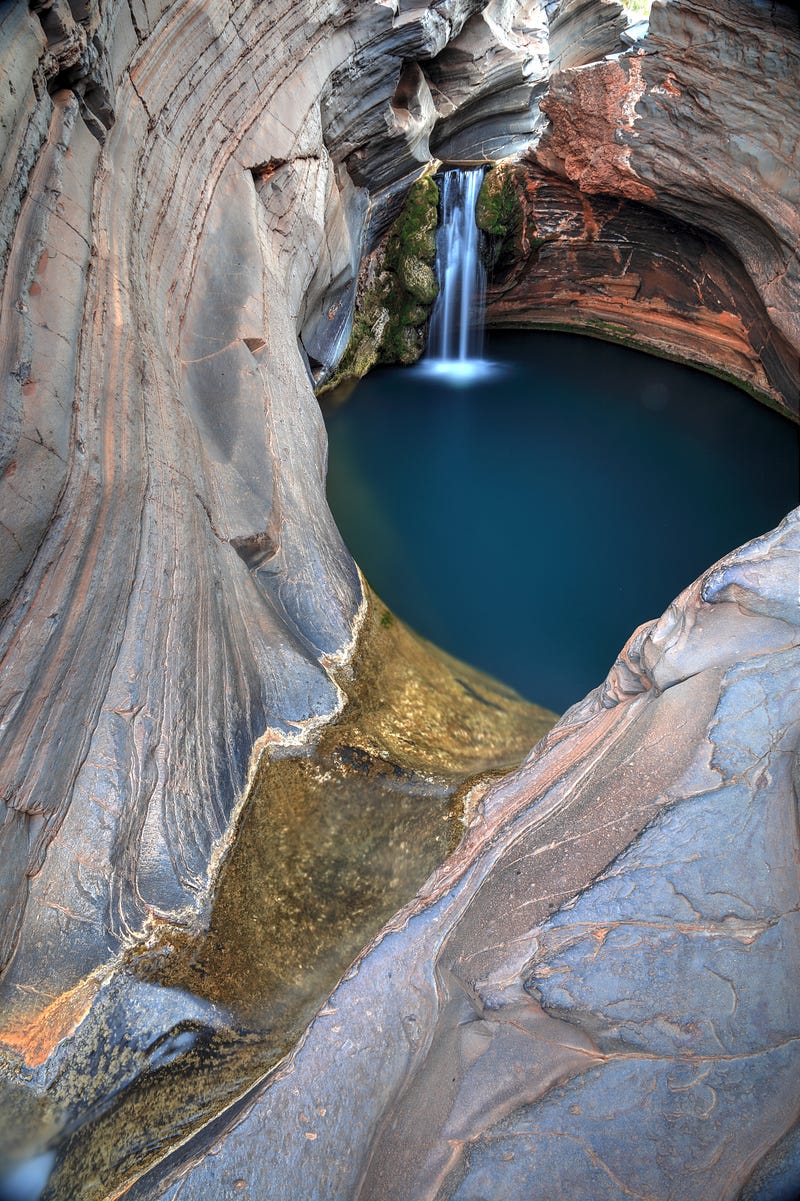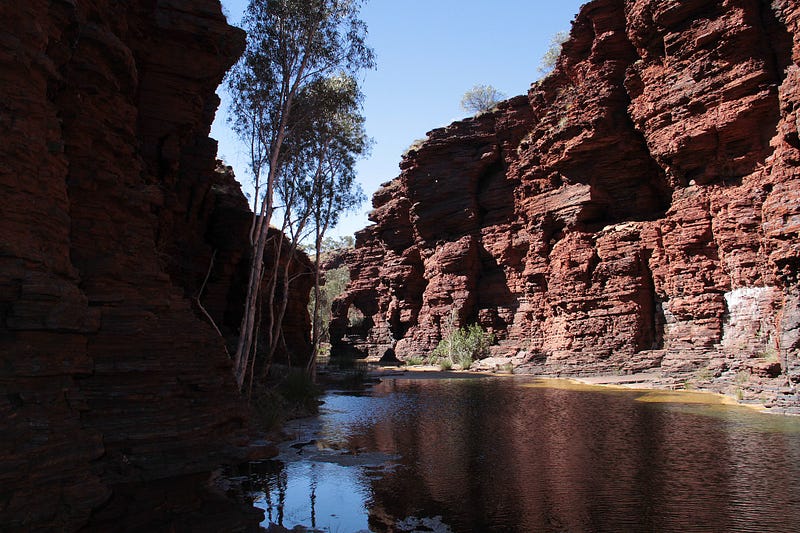The Ancient Pilbara: Earth's Oldest Living Landscape
Written on
Chapter 1: Introduction to the Pilbara
The Pilbara region in Western Australia holds a remarkable place in Earth's history, often drawing comparisons to the planet Mars. Unlike typical tourist destinations, it features no grand structures or bustling crowds, but rather an ancient landscape that speaks volumes about our planet's past.
Scientists estimate that Earth is over 4.5 billion years old, a determination made through isotopic dating techniques that analyze the effects of radioactive decay in geological and archaeological samples. While there is no definitive claim about the oldest location on Earth, researchers have suggested that Pilbara could be among the contenders.

Chapter 2: Geological Significance
The formation of Pilbara dates back over 3.6 billion years, and its expansive red vistas are referred to by Australians as "pindan," a term first documented in print in 1833. Covering roughly 510,000 square kilometers, this sparsely populated area is home to only 61,000 residents.
The region's landscape is characterized by extensive iron-rich rock formations, which are believed to have emerged prior to the "oxygen catastrophe," a period marked by a rapid increase in atmospheric oxygen. While similar deposits may exist elsewhere, Pilbara's geological features are among the best-preserved, allowing researchers to determine their age accurately.
In 1980, fossilized stromatolites dating back 3.45 billion years were discovered in Pilbara, revealing microbial communities of cyanobacteria that thrived before Earth was capable of supporting more complex life forms.

Chapter 3: Mars Research Connection
NASA scientists have previously utilized the Pilbara's unique environment to prepare for future Martian explorations. The region's ancient life evidence has been unparalleled, providing insights into the types of life scientists hope to discover on other planets. Geology professor Martin Van Kranendonk notes that the area's rock composition and iron content closely resemble conditions found on Mars.
Video Description: This video explores NASA's research in the Australian Outback, highlighting how the ancient landscape of Pilbara parallels their search for life on Mars.
Chapter 4: Natural Wonders of Karijini National Park
Beyond its geological importance, the Pilbara is home to the stunning Karijini National Park, renowned for its breathtaking gorges and pools formed over millennia of erosion. This park attracts both tourists and scientists alike, as it offers a glimpse into Earth's layered geological history.
Van Kranendonk emphasizes the importance of these gorges: “They provide a window into the layers of time.”

The park's picturesque waterfalls and lush oases stand in stark contrast to the arid red desert landscape. One of the most photographed locations is the Spa Pool, known for its colorful, smooth rock walls, where tranquility reigns, disturbed only by the gentle sounds of flowing water.
The Pilbara showcases diverse ecosystems, from dry plains to lush valleys where unique flora and fauna thrive. The presence of moss, ferns, and fig trees in water-rich ravines creates a microclimate that supports various wildlife, including lizards, foxes, and large pythons.

Chapter 5: Cultural Significance and Stargazing
Karijini holds cultural significance for Indigenous Australians, who welcome visitors but encourage respectful behavior in this sacred place. Those wishing to immerse themselves in the park's beauty can stay at the Karijini Eco Retreat, run by Indigenous people, where the dry air and lack of light pollution offer stunning views of the Milky Way.
As Karijini guide Pete West articulates, “It’s a place for seekers—photographers, artists, geologists, and nature enthusiasts.”

Video Description: This video showcases how Mars science teams conduct research in Australia, particularly focusing on ancient life forms found in the Pilbara region.